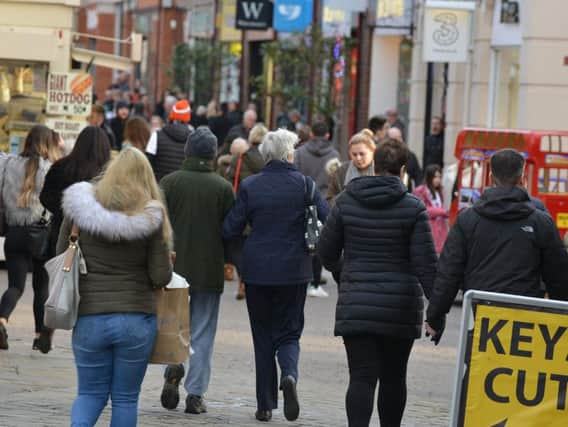Chesterfield suffers 19 shop closures amid 'turbulent year' for high streets


There were a total of 19 store closures in Chesterfield during 2018 and eight openings, according to a report released on Wednesday by finance experts PwC and the Local Data Company.
Politicians and business owners have repeatedly told the Derbyshire Times that residents need to use local shops - or face losing them.
Advertisement
Hide AdAdvertisement
Hide AdAt last month's Celebrate Chesterfield event, Huw Bowen, chief executive of Chesterfield Borough Council, said: "Our retail occupancy levels are holding up well - 92 per cent compared to 88 per cent nationally - however, it's a journey and we need to keep going."
The meeting also heard how the new owners of Chesterfield's Vicar Lane Shopping Centre have ambitious plans to revitalise the site.
What's the situation like in other East Midlands' high streets near Chesterfield?
In 2018, Alfreton saw a net loss of one store (five closures and four openings).
Advertisement
Hide AdAdvertisement
Hide AdRipley saw a net loss of one store (three closures and one opening).
Mansfield saw a net loss of 11 stores (18 closures and seven openings).
Worksop saw a net loss of 11 stores (11 closures and zero openings).
Derby saw a net loss of 31 stores (68 closures and 37 openings).
Advertisement
Hide AdAdvertisement
Hide AdNottingham saw a net loss of 39 closures (62 closures and 23 openings).
'Some tought decisions will need to be taken in the next few years'
Across Britain last year, a record net 2,481 stores disappeared from the top 500 high streets.
Advertisement
Hide AdAdvertisement
Hide AdLisa Hooker, consumer markets leader at PwC, said: "The results are clear - 2018 was a turbulent year for retailers with a number of high-profile store closures. We saw an acceleration in footfall decline on the high street with businesses continuing to see the impact of online shopping, increasing costs and subdued consumer spending.
"It's interesting that the marked reduction in openings has accelerated the net closure trend. In categories as diverse as fashion and financial services, new entrants are able to gain share by launching online - enabled by technology and consumer adoption of mobile and e-commerce - rather than be saddled with the costs and risks of opening on the high street.
"The high street of the future will be a more diverse space, not solely dependent on stores. The analysis reflects this with the net growth of gyms and sports clubs, ice cream parlours and cake shops, in addition to initiatives to bring more shared office spaces and homes into what were traditionally shopping areas. However, it's clear that the rate of openings is not currently enough to offset the closure of traditional retailers and services, so some tough decisions will need to be taken in the next few years."
The report comes after it emerged Debenhams had gone into administration and is now under the control of its lenders.
Advertisement
Hide AdAdvertisement
Hide AdThe firm's 166 stores are expected to continue trading as normal for now, although 50 of them are already earmarked for closure.
Zelf Hussain, retail restructuring partner at PwC, said: "Several national chains weathered company voluntary arrangements or administrations as retailers toiled in the tough climate of 2018. Retail companies looking to survive let alone flourish in 2019 face an uphill battle.
"We have already seen several casualties in 2019 and there will undoubtedly be more, most likely in all categories except for groceries. Those retailers who will give themselves the best chance of survival must focus on having the relevant proposition and the investments needed to deliver this proposition."